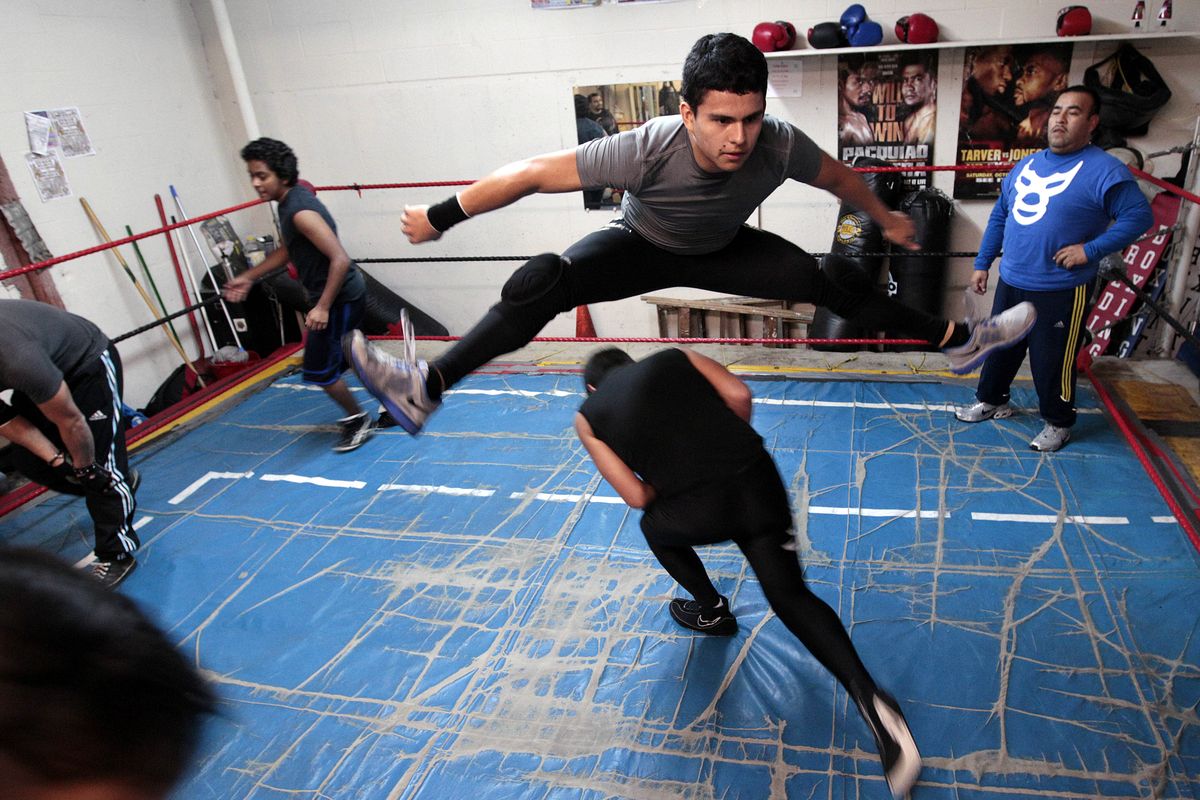Masked wrestling finds niche to north
Former Mexican pro starts club

RENTON, Wash. – They go by the names of Phoenix, Fugitive, Vagabond, Baby Rock and Chicano Power.
In a garage-turned-boxing gym in Renton, they jump-kick each other on their chests and swing one another over their bodies. Some are wearing tights. One dons lipstick-red boots. They practice moves called “Mortal Japanese” and “Suplex.”
“The hits are real. So are the falls,” said coach Jose Gomez. “But the key is not hurting oneself.”
Such was the scene at a recent practice of Lucha Libre Volcanica, Washington state’s only masked Mexican wrestling club.
Lucha libre – meaning literally “free wrestling” – is Mexico’s own brand of wrestling that dates back nearly 80 years.
As Mexican immigrants moved north to the United States, lucha libre followed. Clubs like Gomez’s have popped up in Los Angeles, Chicago and other areas with large Latino communities.
“My father used to take me to the arena, even as a little girl,” said Raquel Matias while watching her 19-year-old son, who goes by the luchador name of Chicano Junior, perfecting the moves. “Now we’re here, supporting lucha.”
The club is a labor of love for Gomez.
For years, Gomez, 48, toured Mexico as a pro wrestler, one half of the two-man team known as “Los Guerreros del Futuro,” or “Future Warriors.” Eventually, though, his family moved north. He’s now a construction worker.
“It’s like having a piece of Mexico here,” Gomez said.
He founded the club in October 2010 with two students. Slowly, after word-of-mouth and dozens of fliers left at Latino stores, his student troupe has grown to 20. The youngest student is 10 years old. The oldest is around 46.
Gomez has doled out his own money to fix up the gym’s roof and paint the walls. He has the masks, boots and tights for his luchadores custom-made in Mexico City.
His biggest challenge so far is finding an audience. The group had a successful outing at a block party in the Seattle neighborhood of South Park during the summer. A subsequent show this fall had lackluster attendance, though.
But Gomez is optimistic. His brother is working on a website to promote the club, and one of his students is trying to line up a show at the University of Puget Sound in a few weeks.
Gomez is glad to see the sport to which he’s dedicated most of his life come alive in his new country.
“I’m leaving something I learned in Mexico City here,” he said.
In Mexico, even if the fan base has waned, lucha libre remains a popular sport.
It was an American import that Mexicans embraced and developed into their own, becoming part of the nation’s cultural identity, said Temple University anthropology professor Heather Levi, who wrote “The World of Lucha Libre: Secrets, Revelations, and Mexican National Identity.”
Lucha libre is “a hybrid of sports and theatrical performances,” Levi added. It’s taken “simultaneously perfectly serious and a big joke. It’s representative of Mexican culture.”
One of the marquee aspects of lucha libre is the intricate masks the wrestlers wear – a Mexican addition to the American version. The masks are meant to evoke the character of the luchador, be it an animal, a hero or a mythical creature.
Their real life identities aren’t supposed to be known. If a wrestler is unmasked in the ring, it’s frowned upon for them to wear a mask again.
But for all the showmanship, lucha libre is a physically challenging endeavor.